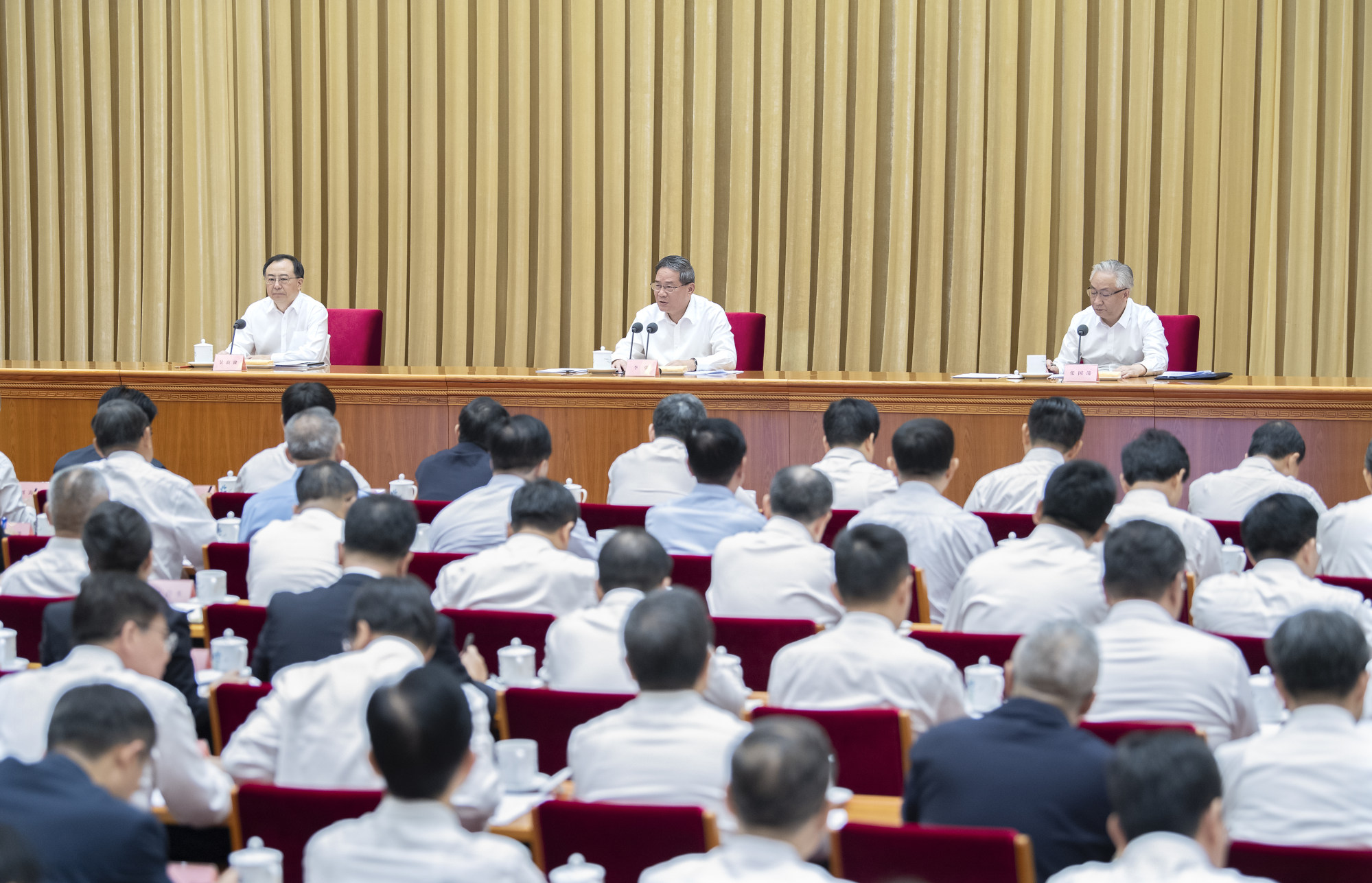
Chinese leaders vow more support for advanced manufacturing drive
- Premier Li Qiang pledges further support for the sector, which the leadership sees as crucial to its efforts to counter US pressure
- Li was speaking at a conference in Beijing, which also received a message from Xi Jinping, who said the drive was key to the ‘country’s modernisation’
“China should aim to enhance the resilience and security of industrial and supply chains, improve innovation power, optimise industrial structures, spearhead the integration of digital technology and the real economy, and facilitate the development of green industry,” said Li, according to state news agency Xinhua.
China aims to become an advanced manufacturing powerhouse by 2035, backed by smart and green industrial production. This year the leadership has placed a heavy emphasis on its importance in helping the economy’s post-pandemic recovery and longer-term growth.
The modernisation drive has taken on a greater urgency amid US efforts to limit China’s access to key technologies and a broader Western effort to diversify supply chains away from China.
These have endangered Beijing’s standing in the global economy and efforts to become a tech superpower.
Jin Zhuanglong, Minister of Industry and Information Technology, wrote in an article in February for Qiushi, the Communist Party’s official theory journal, that China was still positioned at the lower to mid-end of the global value chain and its industries were “big but not strong”.

He also said global competition has intensified as advanced countries have pushed for industrial onshoring while emerging economies are trying to lure business with cheap labour.
“We have been confronted with a more severe and complicated external situation in industrial development. This is a hurdle that we must jump over in the push for new industrialisation,” Jin wrote.
Deng Yuwen, a former deputy editor of the Study Times, the official newspaper of the Central Party School for cadre-training, said the current modernisation drive will be “a lot more difficult” than the previous round that started in the 1980s, as the US and its allies are no longer willing to provide cutting-edge technologies.
“The success of China’s new industrialisation will depend on whether it can make breakthroughs in key industries that face sanctions from the US, such as chip manufacturing,” Deng said.
“Chinese companies like Huawei have made some progress, but we are not sure of the exact progress. So it is way too early to make a proper conclusion.”
China is currently struggling to get the post-Covid economic recovery back on a sustained and reliable trajectory.
Industrial output, a major gauge of manufacturing activity, rose 4.5 per cent in August compared with the previous year, up from 3.7 per cent the previous month. Hi-tech industrial output increased from 0.7 per cent in July to 2.9 per cent last month during the same period.
Xi made the modernisation of China’s industrial system a priority in his work report to October national party congress, which charts the direction for the next five years.
Vowing to focus on China’s real economy, Xi urged the party to move faster to boost the country’s strength in manufacturing, aerospace, transport, cyberspace and digital development.
He also said strategic emerging industries would be promoted and identified areas such as next-generation information technology, artificial intelligence, biotechnology, new energy, new materials, high-end equipment and green industries as sectors to support.

